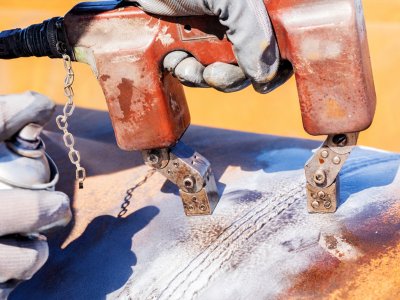A-Type Periodic Inspection Services and Their Importance in Autoclaves
A-Type Periodic Inspection Services and Their Importance in Autoclaves
Autoclaves are pressure vessels widely used in various industries including glass, composites, rubber and medical waste sterilization. Since these systems operate under high temperature and pressure, regular maintenance and inspection are required. According to legal regulations, autoclaves must undergo annual maintenance and inspections. In this context, the A-Type Periodic Inspection Service is conducted to ensure the safe and efficient operation of autoclaves. Unlike maintenance, inspections focus on compliance with standards and aim to check the structural integrity of the autoclave.
Autoclaves are subject to the 2014/68/EU Pressure Equipment Directive, which is recognized by Turkey and the European Community. Periodic inspections are carried out in accordance with the criteria specified in relevant standards (TS 1203 EN 286-1, TS EN 1012-1:2010, TS EN 13445-5) while maintaining compliance with the Pressure Equipment Regulations.
Scope of A-Type Periodic Inspection
The A-Type Periodic Inspection Service includes comprehensive tests and analyses to assess the general condition of the autoclave, check material durability and detect any structural defects. The following procedures are included in this service:
1. Shell Material Thickness Measurements
The thickness of the material used in the autoclave’s body is measured to ensure compliance with the specified standards. Any wear or thinning over time is identified and evaluated for safety.
2. Shell Material Corrosion Inspections
Corrosion on the internal and external surfaces of the autoclave can directly impact its lifespan and safety. Therefore, corrosion inspections are conducted and necessary precautions are determined.
3. Visual Inspection of Weld Seams
The integrity of the welds on the autoclave body is visually examined to check for deformations or defects. This inspection serves as the first step in ensuring structural safety.
4. Non-Destructive Testing (NDT) of Weld Seams
Non-destructive testing (NDT) methods are used for a more detailed examination of the welds. These methods include:
- Magnetic Particle Testing (MT): This NDT method detects surface or near-surface defects in ferromagnetic materials. The principle of the magnetic particle inspection method is based on magnetizing the test piece, which creates leakage magnetic flux at discontinuities on the material’s surface. Iron particles sprayed onto the surface accumulate at these discontinuities, making them visible for evaluation.

- Ultrasonic Testing (UT): In ultrasonic testing, a beam of high-frequency sound waves is transmitted through the welds to detect cracks, voids, inclusions and other internal discontinuities. If a sound wave encounters a defect, it reflects back. The reflected signal appears as wave patterns (echoes) on the ultrasonic inspection device’s screen. The position and height of the echo help determine the defect’s location and size, while the shape of the signal provides clues about the defect type.
- Radiographic Testing (RT): This method allows for an X-ray examination of the internal structure of the welds. Short-wavelength penetrating radiation is used to identify density variations within the material, which indicate defects. Different absorption levels create varying image contrasts on the radiographic film, providing a detailed view of internal discontinuities.
5. Crack Inspections on Bayonet Door Teeth
Cracks in the bayonet teeth of autoclave doors can cause sealing issues and safety risks. Therefore, crack inspections are carried out using specialized testing methods.
6. Hydrostatic Test (Optional)
If deemed necessary, a hydrostatic test is performed on the autoclave. The autoclave is completely filled with water and a hydrostatic pressure test is conducted at 1.5 times the operating pressure. The test assesses the autoclave’s suitability and after a 30-minute evaluation any deformations or leaks are observed before completing the process.
7. Third-Party Accredited Inspection Approval
Periodic inspections carried out by independent A-Type accredited inspection bodies ensure the autoclave’s safe use and result in the issuance of an official inspection report.
Conclusion
The A-Type Periodic Inspection Service is crucial for ensuring the safe, efficient and legally compliant operation of autoclaves. These inspections help identify potential failures in advance, enhancing workplace safety while minimizing possible breakdowns and downtime for businesses. Following regular maintenance and inspection schedules guarantees the long-term reliability and durability of autoclaves.

